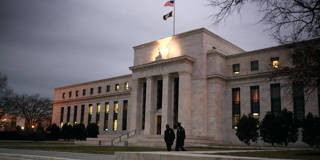Macroeconomic forecasting often rewards pessimists, because, even absent a disaster, new challenges almost always emerge where we least expect them. For now, though, the US economy appears to be firing on all cylinders, even after a historically rapid cycle of monetary-policy tightening.
BERKELEY – The COVID-19 pandemic created both a short- and a medium-term challenge for American economic policy. The immediate challenge was to maintain consumers’ incomes in the face of sweeping lockdowns, supply-chain disruptions, and shifts in aggregate supply. This meant striking a balance between avoiding a depression and not goosing the economy with so much liquidity as to turbocharge inflation.

BERKELEY – The COVID-19 pandemic created both a short- and a medium-term challenge for American economic policy. The immediate challenge was to maintain consumers’ incomes in the face of sweeping lockdowns, supply-chain disruptions, and shifts in aggregate supply. This meant striking a balance between avoiding a depression and not goosing the economy with so much liquidity as to turbocharge inflation.